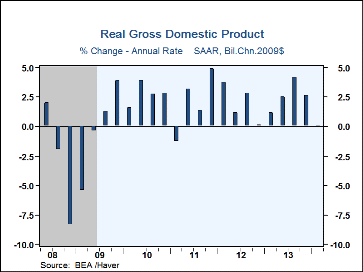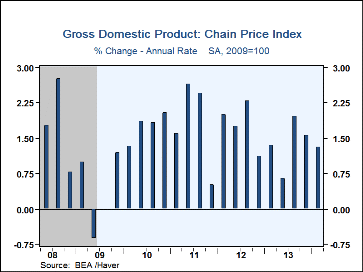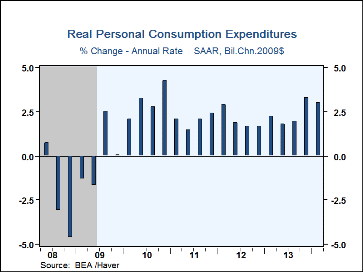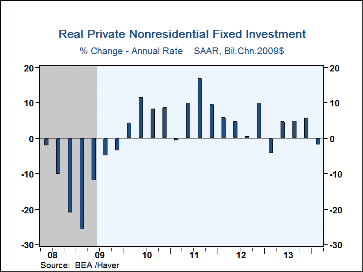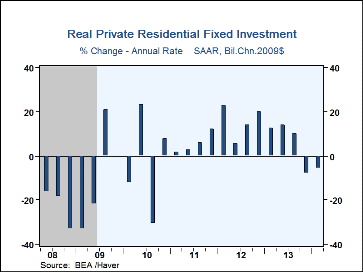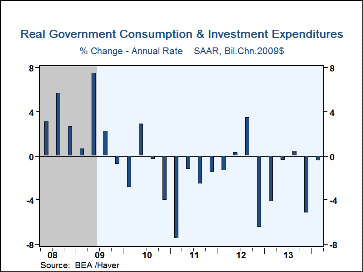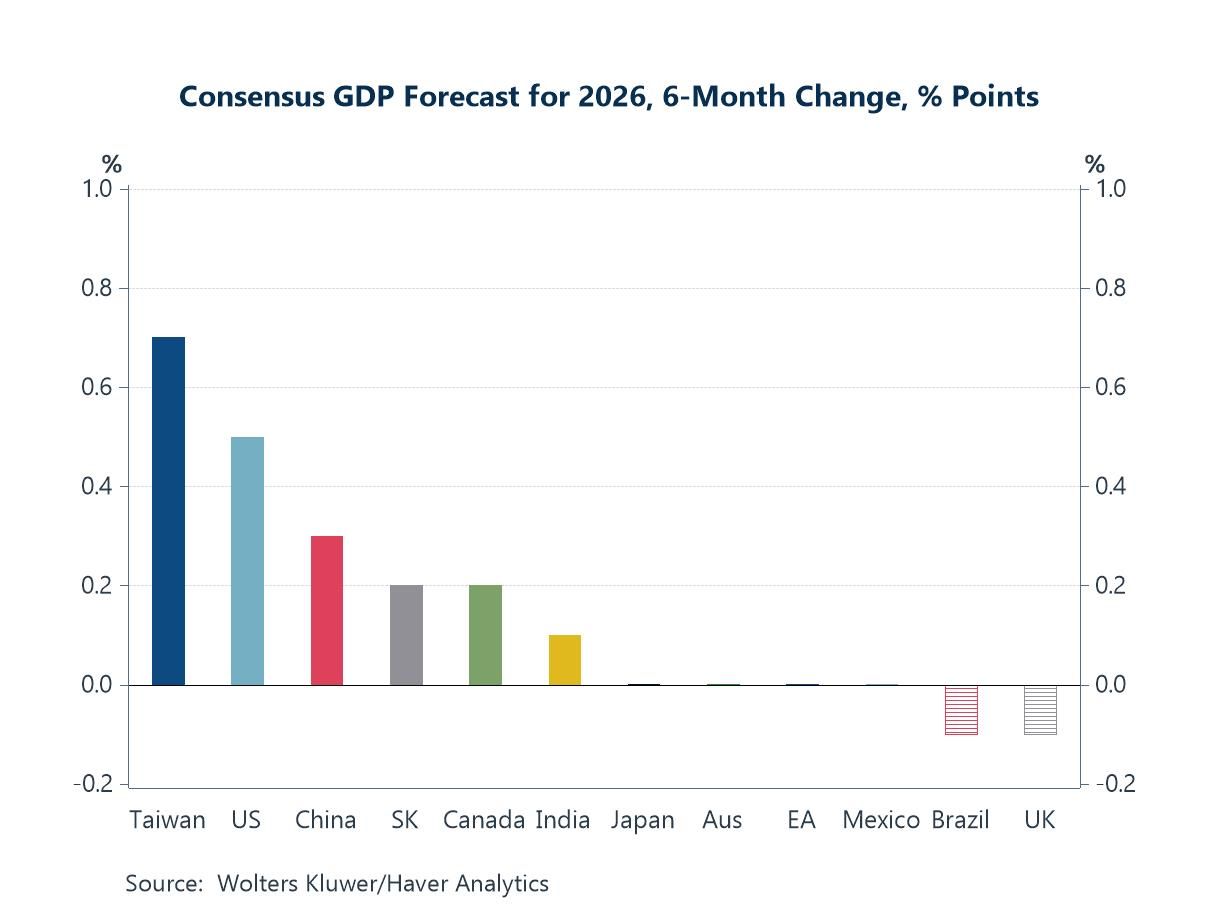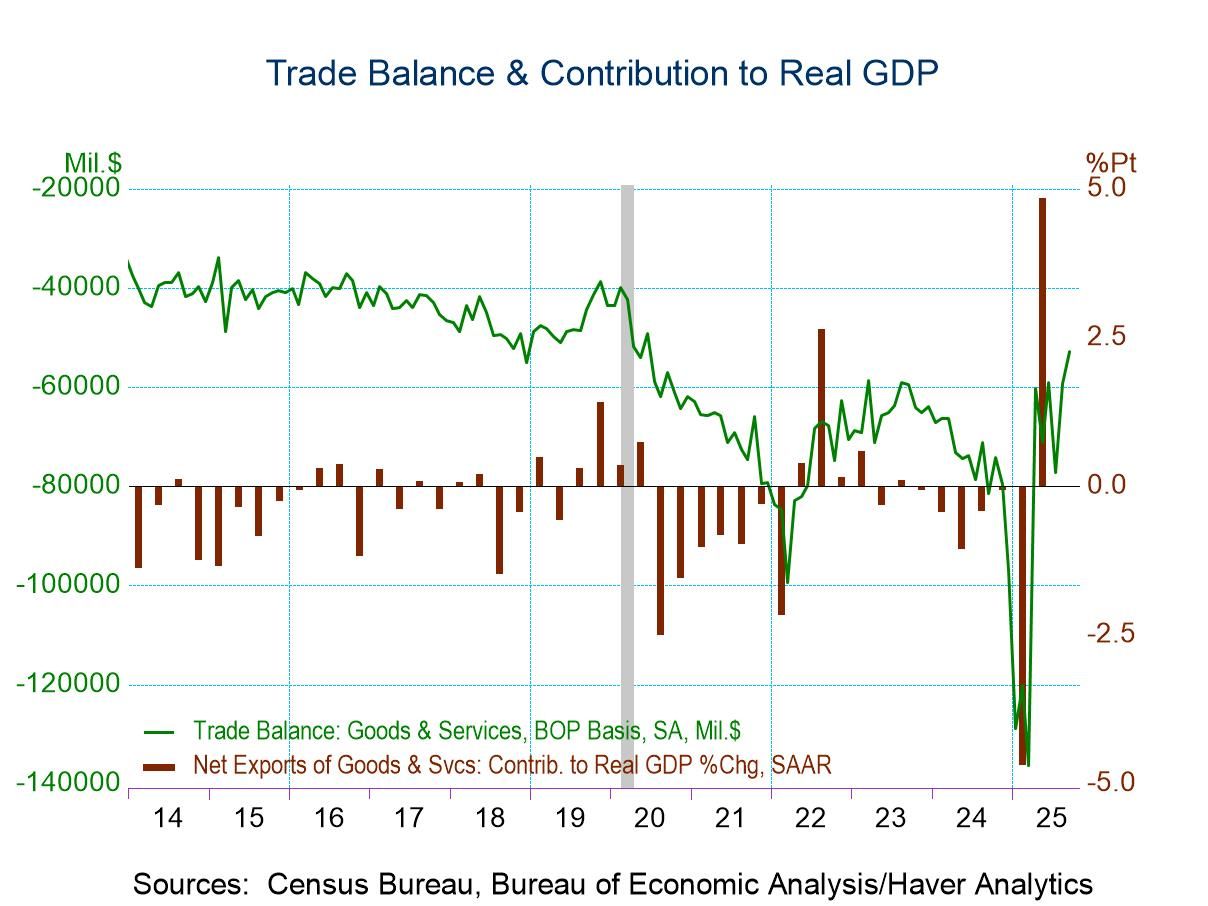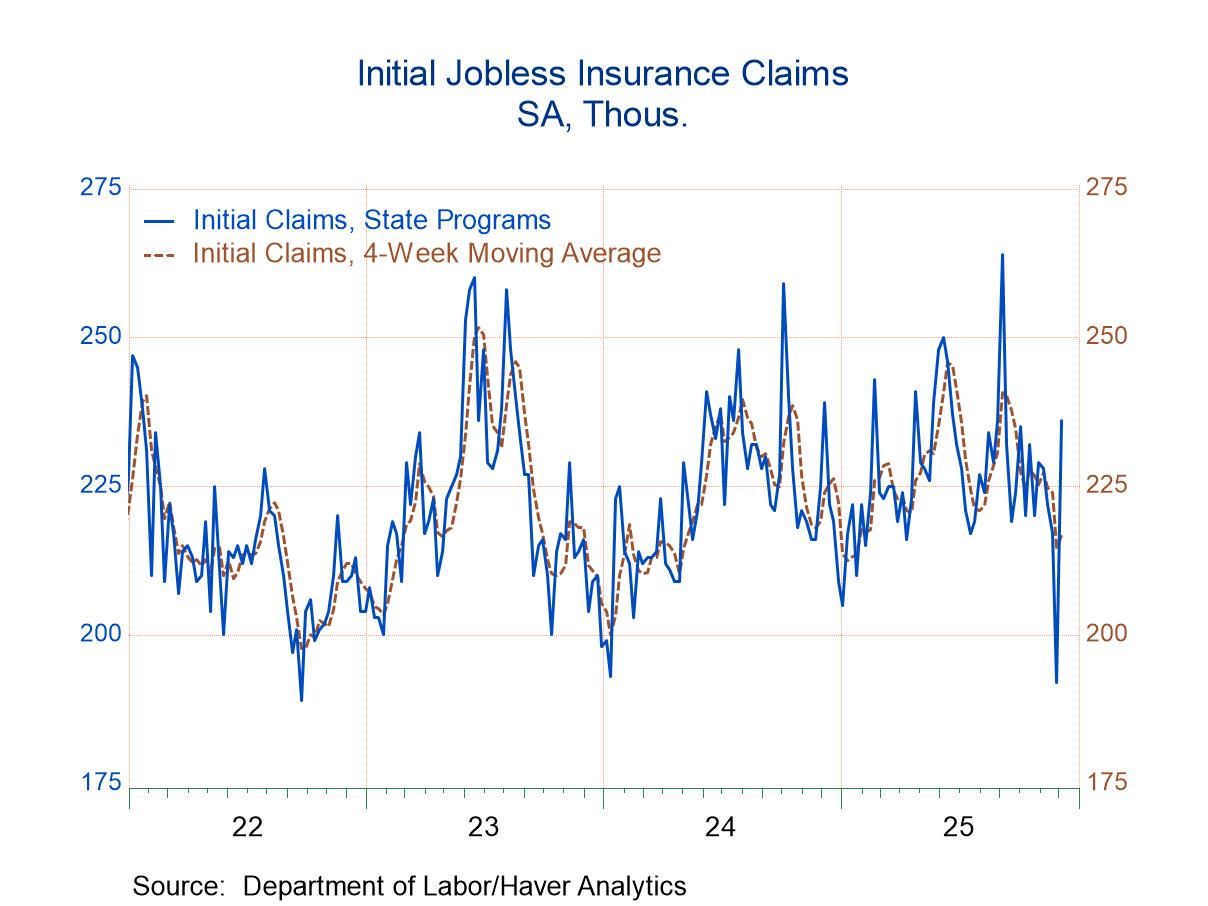 Global| Apr 30 2014
Global| Apr 30 2014U.S. GDP Hardly Increases; Capital Spending and Exports Decline
by:Tom Moeller
|in:Economy in Brief
Summary
Real GDP ticked 0.1% higher (2.3% y/y) last quarter following an unrevised 2.6% gain in Q4 2013. The Department of Commerce indicated in this advance estimate that growth was its weakest since Q4 2012. Growth was well short of [...]
Real GDP ticked 0.1% higher (2.3% y/y) last quarter following an unrevised 2.6% gain in Q4 2013. The Department of Commerce indicated in this advance estimate that growth was its weakest since Q4 2012. Growth was well short of consensus expectations for a 1.1% rise in the Action Economics Forecast Survey. The chain-type price index increased 1.3% (1.4% y/y), below the expected 1.6% gain.
Personal consumption expenditures provided the only support to growth last quarter with a 3.0% rise. Along with a 3.3% Q4 rise, these gains were the strongest since Q4 2010. Spending on services provided most of the lift to growth with a 4.4% advance (2.4% y/y). It was powered by a 9.9% surge (5.4% y/y) in health care expenditures. Durable goods spending gained 0.8% (4.4% y/y), held back by a 1.6% decline (+5.5% y/y) in furniture & household equipment. Motor vehicle outlays gained 0.8% (1.2% y/y) after little change in Q4. Nondurable goods outlays nudged up 0.2% (1.9% y/y), restrained by a 4.1% decline (+0.4% y/y) in apparel outlays.
Business investment eased 2.0% (+3.2 y/y), its first decline in a year. It reflected a 5.5% reduction (+2.0% y/y) in equipment outlays, dragged down by a 14.8% drop (-1.5% y/y) in information & processing spending. Industrial equipment countered the decline with a 10.3% rise (5.1% y/y). Structures spending slipped 0.2% (+7.0% y/y). Also to the downside was residential investment. Reflecting severe winter weather, its 5.8% decline (+2.2% y/y) followed a 7.9% Q4 drop.
Reduced government spending added to last quarter's minimal GDP growth. The 0.5% decline (-1.5% y/y) reflected a 2.4% drop (-4.7% y/y) in defense outlays and a 1.3% reduction (+0.2% y/y) in spending by state & local governments.
Foreign trade's effect on growth was a negative 0.8 percentage points. That was the first reduction in a year and reflected a 7.6% decline (+3.2% y/y) in exports. This shortfall also was the first in a year and was accompanied by a 1.4% drop (+2.3% y/y) in imports. Rounding out the negative effects on GDP growth was a slower rate of inventory accumulation. Its 0.6 percentage point reduction followed little change in Q4 and was only the second shortfall since Q4'12.
The news on pricing power was encouraging as the 1.3% advance (1.4% y/y) was the weakest since Q2'13. It reflected a moderate 1.4% rise (1.1% y/y) in consumer prices and a steady 1.2% gain (1.2% y/y) in business fixed investment prices. The government sector price index advanced 0.6% (1.3% y/y).
The latest GDP figures can be found in Haver's USECON and USNA databases; USNA contains basically all of the Bureau of Economic Analysis' detail in the national accounts, including the new integrated economics accounts and the recently added GDP data for U.S. Territories. The Action Economics consensus estimates can be found in AS1REPNA.
A Guide to Tracking the U.S. Economy from the Federal Reserve Bank of St. Louis is available here.
| Chained 2009 $, %, AR | Q1'14 (Advance) | Q4'13 | Q3'13 | Q1 Y/Y | 2013 | 2012 | 2011 |
|---|---|---|---|---|---|---|---|
| Gross Domestic Product | 0.1 | 2.6 | 4.1 | 2.3 | 1.9 | 2.8 | 1.8 |
| Inventory Effect | -0.6 | -0.0 | 1.7 | 0.2 | 0.2 | 0.2 | -0.2 |
| Final Sales | 0.7 | 2.7 | 2.5 | 2.0 | 1.7 | 2.6 | 2.0 |
| Foreign Trade Effect | -0.8 | 1.0 | 0.1 | 0.2 | 0.2 | 0.2 | 0.2 |
| Domestic Final Sales | 1.5 | 1.6 | 2.3 | 1.9 | 1.5 | 2.4 | 1.8 |
| Demand Components | |||||||
| Personal Consumption Expenditures | 3.0 | 3.3 | 2.0 | 2.5 | 2.0 | 2.2 | 2.5 |
| Business Fixed Investment | -2.0 | 5.7 | 4.8 | 3.2 | 2.7 | 7.3 | 7.6 |
| Residential Investment | -5.8 | -7.9 | 10.3 | 2.2 | 12.2 | 12.9 | 0.5 |
| Government Spending | -0.5 | -5.2 | 0.4 | -1.5 | -2.3 | -1.0 | -3.2 |
| Chain-Type Price Index | |||||||
| GDP | 1.3 | 1.6 | 2.0 | 1.4 | 1.4 | 1.7 | 2.0 |
| Personal Consumption Expenditures | 1.4 | 1.1 | 1.9 | 1.1 | 1.1 | 1.8 | 2.4 |
| Less Food/Energy | 1.3 | 1.3 | 1.4 | 1.1 | 1.2 | 1.8 | 1.4 |
Tom Moeller
AuthorMore in Author Profile »Prior to joining Haver Analytics in 2000, Mr. Moeller worked as the Economist at Chancellor Capital Management from 1985 to 1999. There, he developed comprehensive economic forecasts and interpreted economic data for equity and fixed income portfolio managers. Also at Chancellor, Mr. Moeller worked as an equity analyst and was responsible for researching and rating companies in the economically sensitive automobile and housing industries for investment in Chancellor’s equity portfolio. Prior to joining Chancellor, Mr. Moeller was an Economist at Citibank from 1979 to 1984. He also analyzed pricing behavior in the metals industry for the Council on Wage and Price Stability in Washington, D.C. In 1999, Mr. Moeller received the award for most accurate forecast from the Forecasters' Club of New York. From 1990 to 1992 he was President of the New York Association for Business Economists. Mr. Moeller earned an M.B.A. in Finance from Fordham University, where he graduated in 1987. He holds a Bachelor of Arts in Economics from George Washington University.


